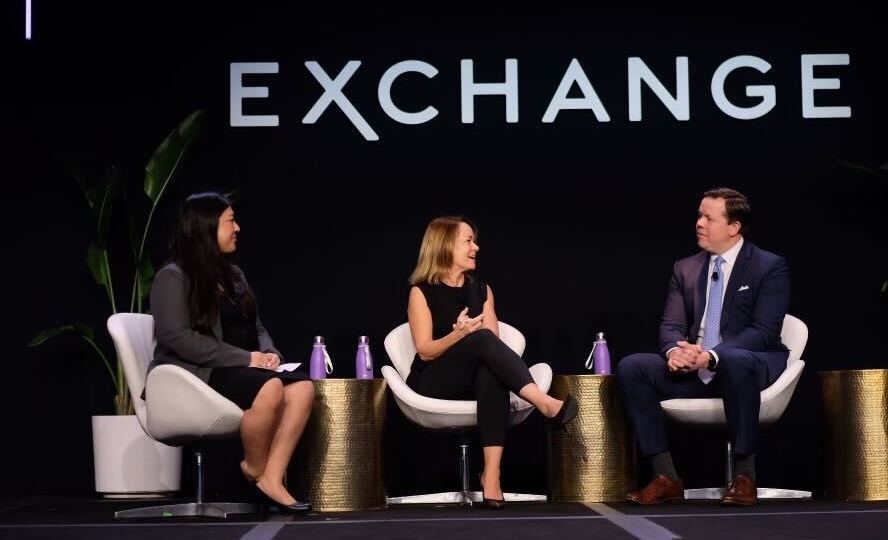Thematics have become an increasingly important tool for generating returns in client portfolios. While active ETFs may have a small share of the overall ETF market, the structure is more prevalent among thematics, leaving many advisors unsure of which structure to consider. On Tuesday at Exchange: An ETF Experience, Roxanna Islam Swan, associate director of research at VettaFi, led a panel of ETF veterans as they discussed use cases for thematic offerings and whether active or passive is a superior approach.
“The goal of [a passive] ETF is to track exactly what the performance of the index is,” Laura Morrison, chief revenue officer at Direxion, said during the panel. “An active ETF is a little bit different, as you’re heavily relying on the manager and the analysts that are pulling all of this critical information — they’re making the decisions and timing the market properly.”
Morrison said that in periods of challenging market conditions, like we’ve experienced lately, active managers can adjust the fund’s exposures.
Ryan Issakainen, ETF strategist for First Trust Advisors, said the firm offers both passive and active thematic ETFs.
“I would say passive is pretty well understood — you know what you’re getting, and it’s a very transparent methodology,” Issakainen said. “One of the benefits of active is that you can pull in, especially if it’s a little bit broader mandate, you can pull in certain innovation themes that maybe aren’t quite developed enough to have an entire liquid portfolio focused on that in and of itself.”
“In other words, if there are five stocks that are focused on a specific theme that you think are a really good opportunity, but it’s not far enough along to build a specific thematic, you can incorporate that into a more diversified approach,” Issakainen added.
For more coverage of Exchange 2023, please visit VettaFi | ETF Trends.









